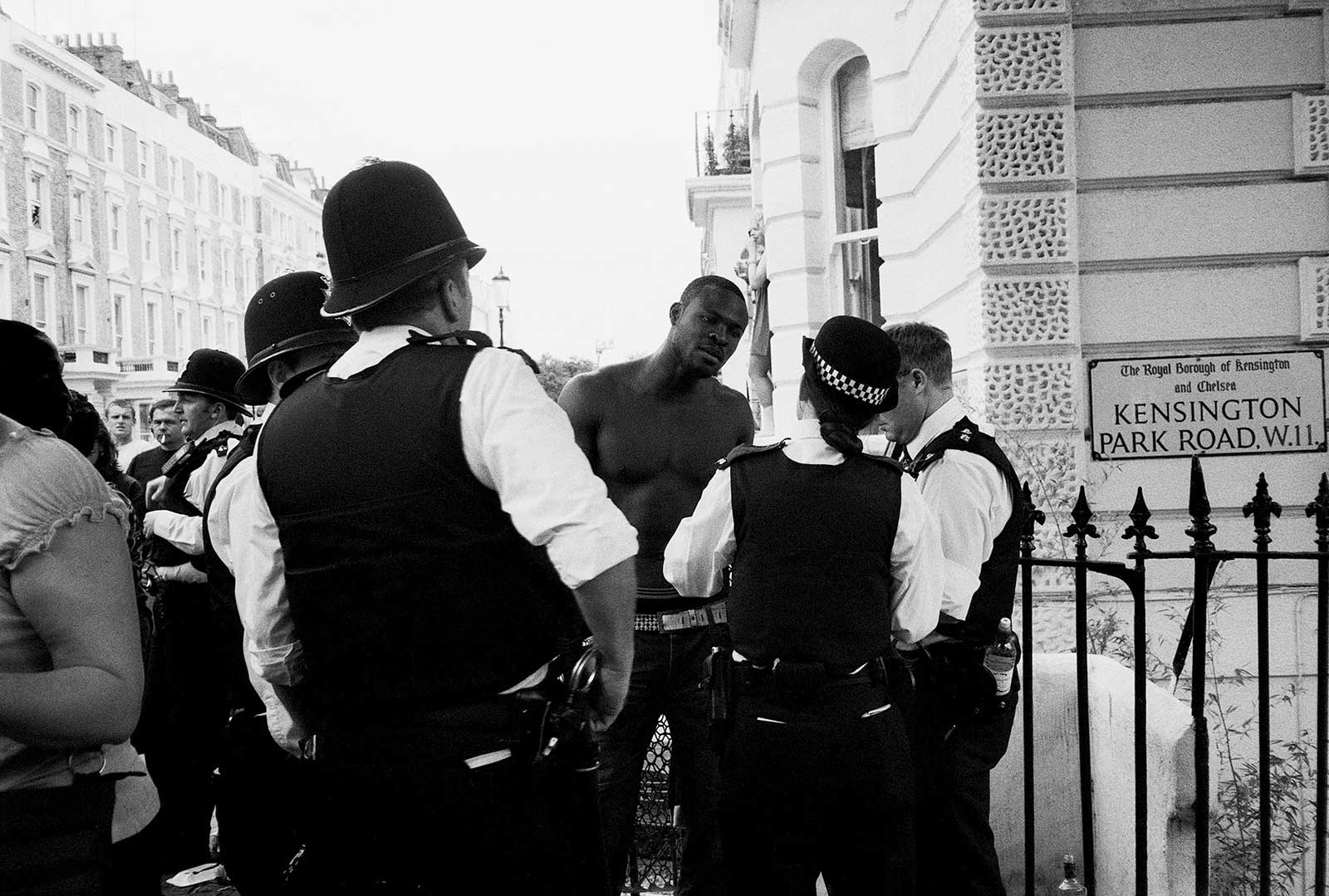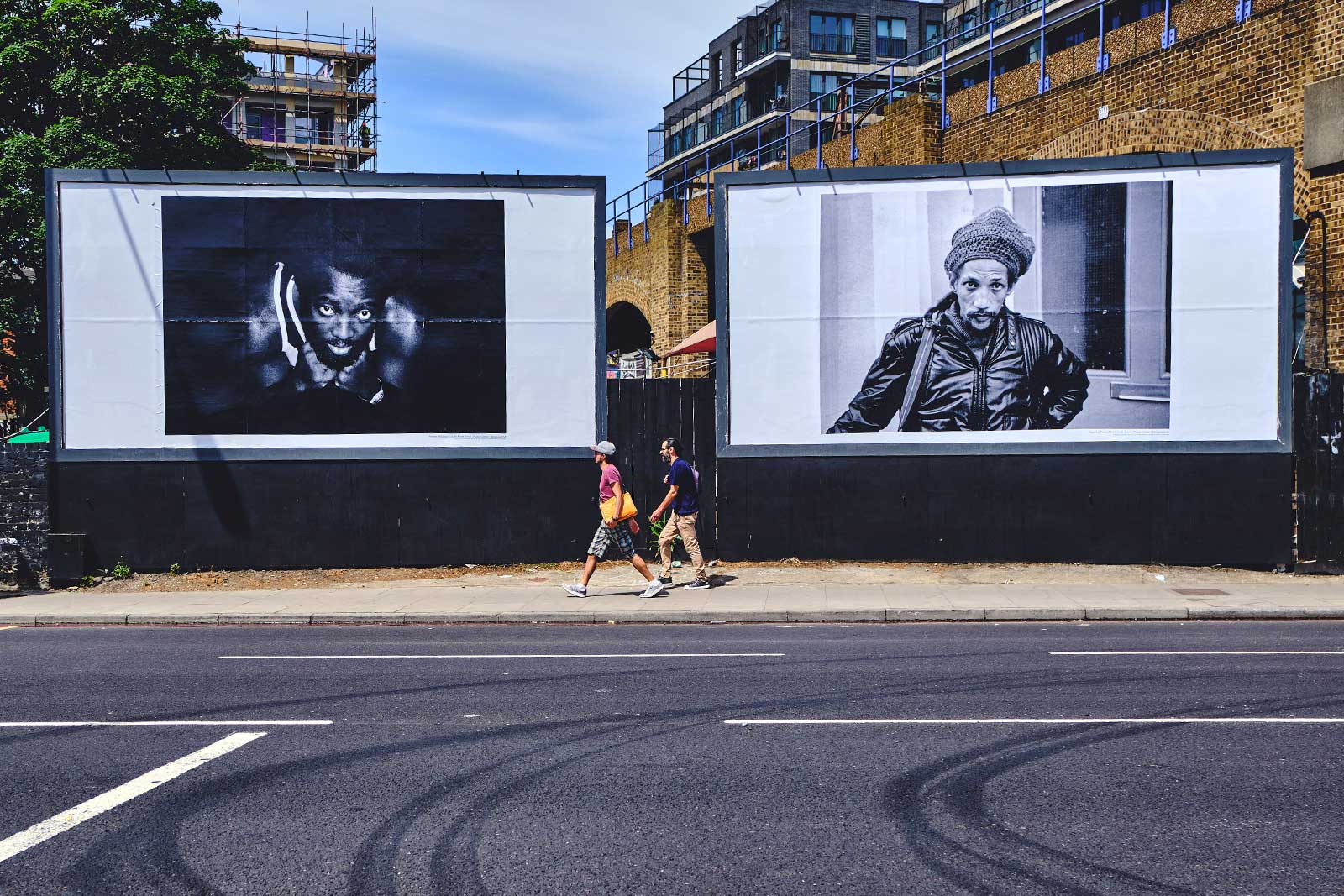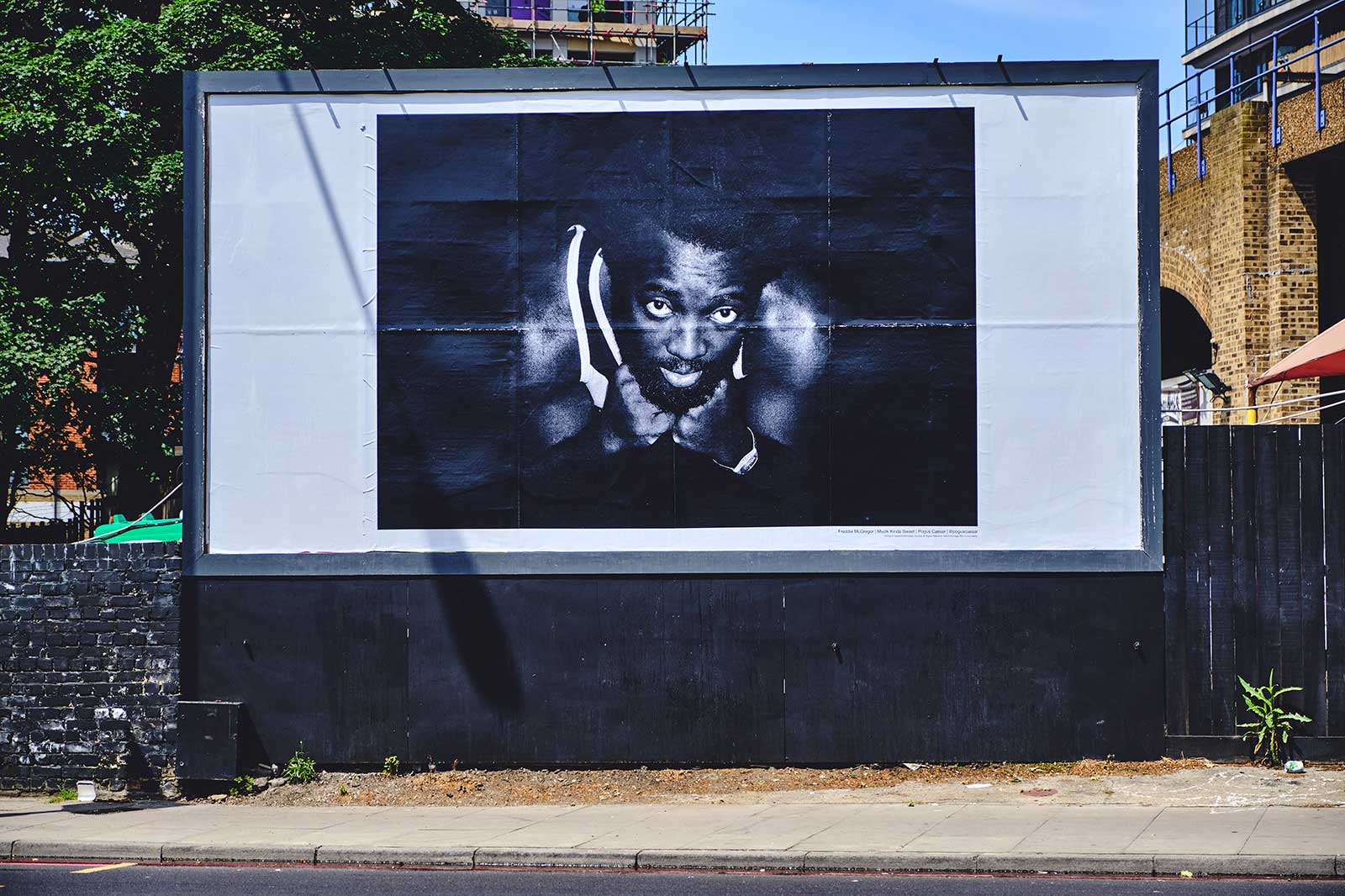Your Space Or Mine
Pogus Caesar
Conceptual artist Pogus Caesar was born in St Kitts, West Indies and grew up in Birmingham, England. While beginning his career as a pointillist painter, the purchase of a 35mm camera in the 80s changed Caesar’s life. Indeed, it’s the very same camera that he works on to this day.
Caesar has documented prominent figures in the music industry alongside key historical events including the Handsworth Riots in 1985. He often reworks 35mm negatives into new forms, challenging the notion of religion, sex, history and identity from a Black British perspective.
As a music fan and scholar, Caesar was thrilled when he got the opportunity to be able to document some of his musical icons from the 80s onwards. Over the years, these photographs formed his ‘Muzik Kinda Sweet’ project, where Caesar takes globally renowned artists and captures them in everyday situations.
“When I took these images, it was about trying to photograph the artists outside the context of their stardom,” Caesar says of the street locations where he took many of his photos. “A lot of images and portraits of musicians are usually very shiny and staged. I wanted the opposite of that…I wanted to capture them in a natural setting to illustrate that. It was always important for me to show they’re just ordinary people who do extraordinary things.”
Caesar’s work has been exhibited widely and is acclaimed for documenting Black British history from the street. In 2004, he established OOM Gallery Archive in Birmingham, which represents his photographic archive worldwide.
Caesar spoke to us to reflect on his career, what it’s like taking an image of a musician in an ordinary setting like the street and what he hopes the public will take from the project.
09.06.21
Words by




 Handsworth Riots, Birmingham, UK 1985 © Pogus Caesar/OOM Gallery Archive. All Rights Reserved, DACS/Artimage 2021
Handsworth Riots, Birmingham, UK 1985 © Pogus Caesar/OOM Gallery Archive. All Rights Reserved, DACS/Artimage 2021
 The Wrong Man, London, UK 2008 From the series Schwarz Flaneur © Pogus Caesar/OOM Gallery Archive. All Rights Reserved, DACS/Artimage 2021
The Wrong Man, London, UK 2008 From the series Schwarz Flaneur © Pogus Caesar/OOM Gallery Archive. All Rights Reserved, DACS/Artimage 2021





 Dubplate Specialist, Birmingham, UK, 1986 From the series Schwarz Flaneur © Pogus Caesar/OOM Gallery Archive. All Rights Reserved, DACS/Artimage 2021
Dubplate Specialist, Birmingham, UK, 1986 From the series Schwarz Flaneur © Pogus Caesar/OOM Gallery Archive. All Rights Reserved, DACS/Artimage 2021
 A Yu Dat, Jamaica, 2008 From the series Schwarz Flaneur © Pogus Caesar/OOM Gallery Archive. All Rights Reserved, DACS/Artimage 2021
A Yu Dat, Jamaica, 2008 From the series Schwarz Flaneur © Pogus Caesar/OOM Gallery Archive. All Rights Reserved, DACS/Artimage 2021




